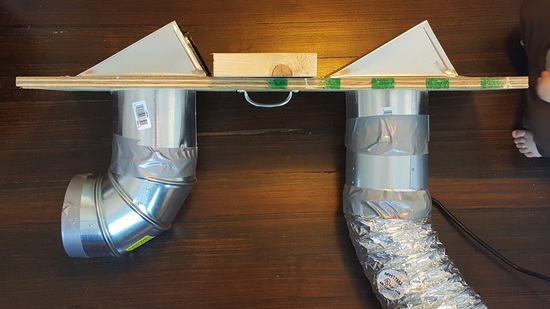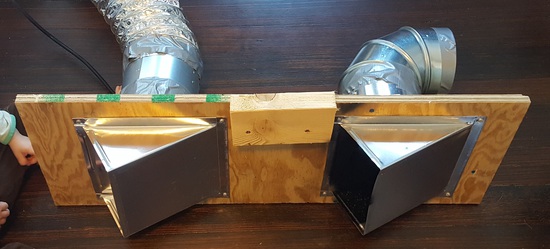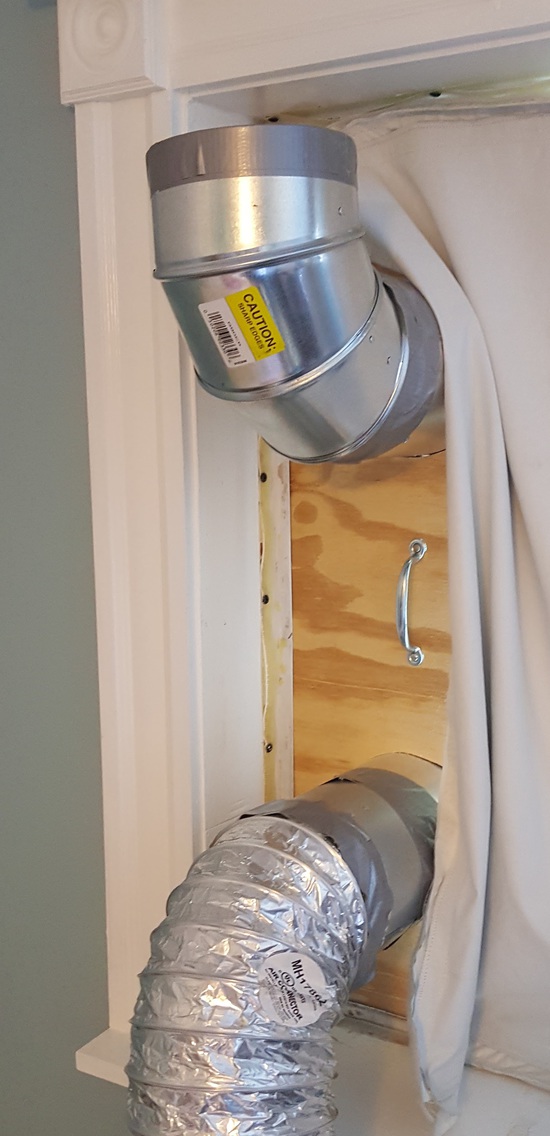Window Vent |
July 16th, 2017 |
| cooling, fan, ideas |
What if we pipe the outside air directly onto you? Then you feel the outdoor temperature, instead of the current room temperature which lags significantly behind:

The idea is, you put a vent in the window with a flexible duct that runs over to where you sleep. The duct has an in-line fan to move the air. I built it with two vents, a powered one in and a passive one out, but the house is probably open enough that you can just do with the in one.

Not only does this blow cold air on you, but it does that while blocking out the light, if you like to keep your room completely dark.

What I would do if I were going to make another of these:
- Don't bother with the out-vent, just do an in-one
- Materials:
- 6" vent
- 6" in-line duct fan
- 6" radiator clamp
- 6" flexible aluminum foil duct
- 3/4 plywood: 12" by the width of the window
- 4 3/4" wood screws
- 4 sheet metal screws
- tool that can cut a circular 6" hole (I used a jigsaw)
- scrap wood, maybe 3" by 5"
- 2 screws for holding scrap wood to the main plywood piece
- Cost: about $85, plus $0.05/night for electricity (0.24 kWh/night)
- Cut the plywood to size, so that when you close the window onto the piece it fills the entire opening. It needs to be 12" in the shortest dimension so the vent will fit.
- Make a hole centered in the plywood for the vent. Trace one of the duct pieces to make a 6" hole. Err on the side of being slightly too big.
- Remove the flapper from the vent but leave the screen. If it doesn't have one put one in. You don't want to blow bugs onto your head.
- Put the vent collar through the hole, get it rotated so it opens downward, pre-drill holes for the wood screws, attach it.
- The vent is expected to be used in the opposite direction, so isn't crimped. Crimp it manually with pliers so that it will slide into the end of the in-line fan. Make sure you're making the fan blow in. Once they're together solidly, attach with sheet metal screws.
- Figure out how long the duct needs to be and cut it to length. Better a bit too long than too short. Slide the radiator clamp over the fan, then slide the duct over fan. Use the radiator clamp to attach them together.
- Attach the scrap wood to the outside of the plywood so that the thing can't fall into the house. If it wants to fall outside, you might need some scrap on this side instead.
- If you did two vents, spray-painting the inside of the vent that doesn't have the long flexible duct black will keep out more light.
Comment via: google plus, facebook, substack